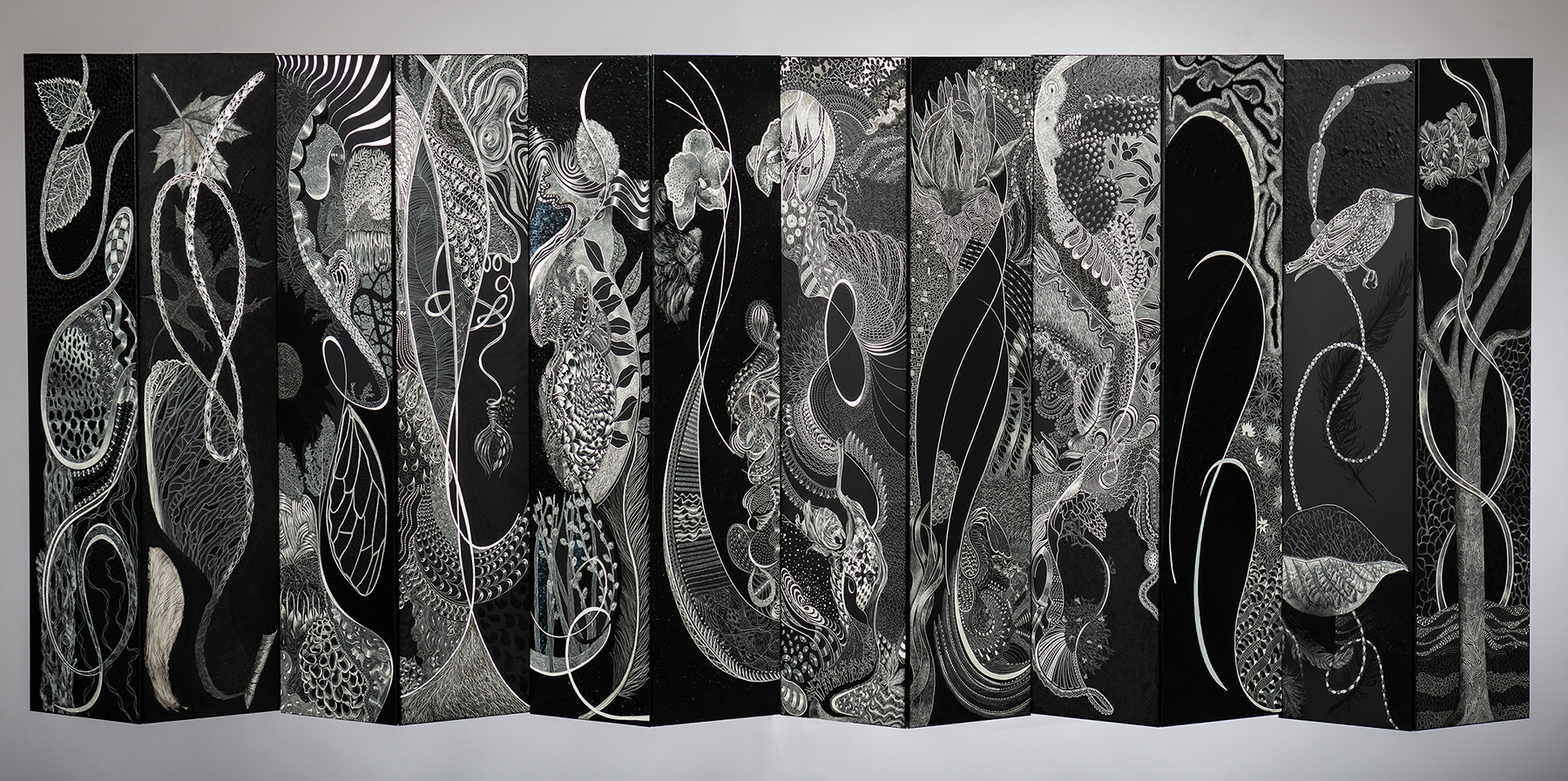Across The Board by Lisa Goesling
In the Victorian era, designers, came up with the term, “Horror Cacu”, (fear of empty space) to counter the Victorian idea of putting knick-knacks in every little space that was empty. In the 20th century, that concept became “less is more” which guided the minimalist movement of the latter half of the century. The idea is still with us today.
Steve Jobs made a fortune by utilizing the principle of “Form Follows Function” in building his corporate empire (which is ironically neither ‘less’ or ‘empty’). Empty white space became synonymous with wealth and good taste.
There is another stream of thought though that extends back to the dawn of time, which involves the beauty of visual complexity. Greek vases from the Geometric Period (1100 – 800 BC) Persian carpets, Middle Eastern Arabesque Islamic art from ancient times to the present, Renaissance woodcuts and certain paintings, Alchemical etchings, Arts and Crafts book binding, Illustrated manuscripts and much more, are all wonderful examples of another way of thinking.
The Persian rug with 300 knots per inch is prized for its detail. In this exhibition, David and Lisa explore the idea of the complex with amazing results. The viewer is confronted by the beauty of the visual elements and the mystery of how they did what they did. In the case of both of these wonderful artists, we ask ourselves “How on Earth did they do that?” As we try to understand the complexity of what we are looking at, we begin to see the overwhelming beauty of the artwork itself. Like all great detailed objects, the beauty lies in the relationship between the parts and the whole.
Enjoy the experience. It is not often you will see anything comparable.
Written by Steve Sherrell, Gallery Curator


